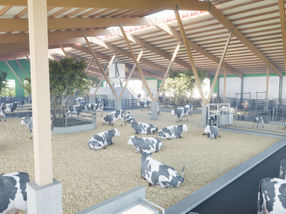Sugar intake is falling, but is still too high
Study by the University of Bonn examines the nutrition of children and young people and sees a need for further action
Advertisement
High amounts of sugar in our diet are being discussed as one of the risk factors for obesity and chronic diseases. Researchers at the University of Bonn have evaluated the sugar intake of children and adolescents as part of a long-term study. The result: sugar intake has been falling continuously since 2010, but is still above the amount recommended by the World Health Organization (WHO). The study will be published in the European Journal of Nutrition; it is already available online in advance.
"Our analysis focuses on the intake of free sugars," says Dr. Ines Perrar, research associate at the Institute of Nutrition and Food Sciences (IEL) at the University of Bonn and lead author of the study. "There is a debate as to whether sugar, like salt and fats, is linked to the development of chronic diseases." The WHO defines free sugars as any sugar, including honey, syrup and fruit juice concentrates, that is added by the manufacturer or during the preparation of food or drinks at home. This also includes sugar that is naturally contained in juices.
The IEL researchers used data from the "Dortmund Nutritional and Anthropometric Longitudinally Designed" cohort study (DONALD) for their analysis. The DONALD study has been collecting detailed information on the nutrition, metabolism, development and health of children and adolescents since 1985. "The participants weigh and document everything they eat and drink on three consecutive days once a year," explains Prof. Dr. Ute Nöthlings, Professor of Nutritional Epidemiology at the IEL. "With the help of our institute's own nutrient database, we can estimate the intake of certain nutrients, including free sugars."
Young people in particular consume too much sugar
The authors have now analyzed 4,218 of these three-day weighing records from 751 children and adolescents aged three to 18 years, which were recorded between 2010 and 2023. "We found that the intake of free sugars continues to decline," says Ines Perrar. "Nevertheless, the average daily intake is still above the recommendation of the WHO and the German Nutrition Society, which recommend a maximum of ten percent of total energy intake per day."
An analysis of the DONALD data in 2019 had already shown that the intake of free sugars has been decreasing since 2005 and was around 16% of daily energy intake on average in 2016. This figure has now fallen again to 11.7%. The researchers suspect that one possible reason for this trend is an increased awareness of the health consequences of consuming too much of certain sugary foods, such as sugar-sweetened drinks.
This is undoubtedly a success, but the researchers point to differences in the age groups: "During the observation period, we see a relatively high intake of free sugars of 15 percent, particularly among adolescents aged six to 14 years. The intake then decreases significantly with increasing age," says Ute Nöthlings, who is not only head of the DONALD study, but also spokesperson for the Transdisciplinary Research Area (TRA) "Sustainable Futures" and a member of the TRA "Life and Health" at the University of Bonn.
Actual sugar intake is probably even higher
The results support the current federal policy initiative to reduce the sugar content of breakfast cereals, sweetened dairy products, soft drinks and fruit drinks by at least 15 percent by 2025. In this context, the researchers point out that sugar consumption is probably higher than the study data suggests. On the one hand, there is a risk of underreporting due to the self-reporting of diet by the test subjects. Secondly, the study is not representative, as the extensive study design means that families with a higher socio-economic status are more likely to take part and a greater awareness of nutrition and health issues can be expected here.
Note: This article has been translated using a computer system without human intervention. LUMITOS offers these automatic translations to present a wider range of current news. Since this article has been translated with automatic translation, it is possible that it contains errors in vocabulary, syntax or grammar. The original article in German can be found here.


































































